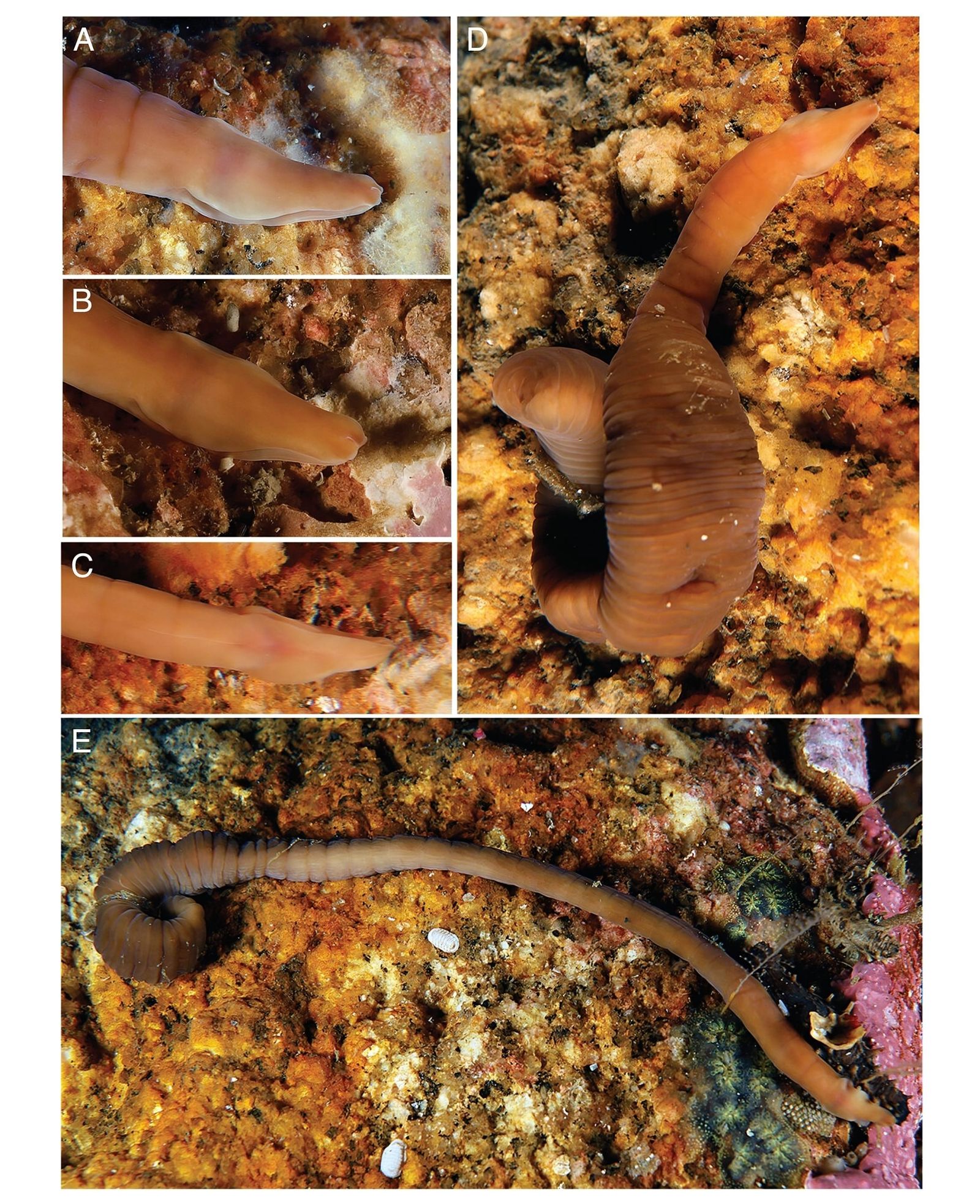Discovery of an unknown marine worm with unique abilities 🪱
Published by Cédric,
Article author: Cédric DEPOND
Source: Royal Society Open Science
Other Languages: FR, DE, ES, PT
Article author: Cédric DEPOND
Source: Royal Society Open Science
Other Languages: FR, DE, ES, PT
Follow us on Google News (click on ☆)

A) Dorso-lateral view of the head of P. vigarae sp. nov., showing the cephalic slits.
B) Anterior end in dorso-lateral view, with detail of the head tip.
C) Ventral view of the head, the mouth appears as a white line in the center, just behind the cephalic slits.
D) Complete specimen with contracted body, showing the epidermal rings.
E) Dorsal view of a relaxed specimen, showing the epidermal rings.
This exceptionally regular movement sets Pararosa vigarae apart from all other marine worms. While most contract in a disordered manner, this one retains its characteristic folds even when fully stretched. An anatomical peculiarity that puzzles scientists.
Discovered under rocks at a depth of 30 meters (98 feet), this worm measures up to 25 cm (10 inches). Its body can retract to one-fifth of its size. This trait, combined with its venomous hunting method, makes it a subject of study for biologists.
A chance discovery with innovative methods
Jacinto Pérez Dieste, an amateur diver, spotted the first specimens in 2021 in the Ria de Arousa. Researchers then used a combined approach of morphology and genetic analysis to confirm the novelty of the species.
The persistent rings, even when the worm is stretched, distinguish Pararosa vigarae from other nematodes. According to the study published in Royal Society Open Science, these epidermal constrictions may result from evolutionary convergence with other worm lineages.
Six specimens were collected and preserved in RNAlater (which stabilizes and protects RNA in non-frozen samples) for analysis. Genetic sequences (16S rRNA, COI, etc.) revealed a distinct lineage within the Lineidae family. This mixed method opens perspectives for studying other cryptic species.
A little-known predator with astonishing abilities
Like all Nemertea, this worm uses venom to capture its prey. The toxins employed remain poorly understood, but their study could shed light on the evolution of predation mechanisms.
Despite the absence of eyes, Pararosa vigarae has a developed brain. Its subtidal habitat, under shells and rocks, suggests an adaptation to specific ecological niches. The Galicia region, though well studied, still harbors undiscovered species.
Researchers emphasize the importance of coastal explorations to uncover marine biodiversity. The combination of morphological and molecular data stands as a key method to identify these organisms.